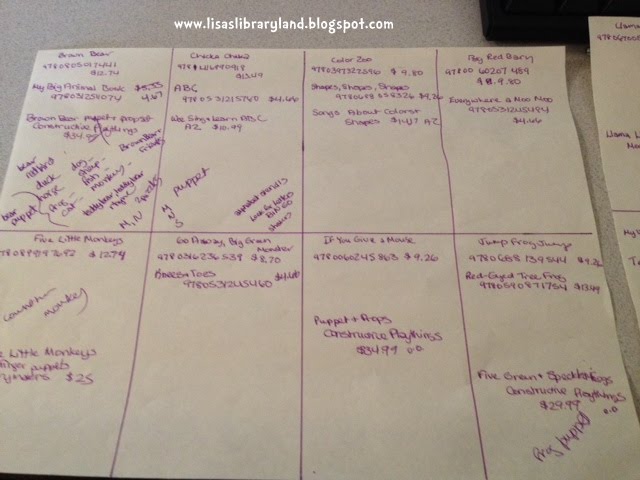Problem #1-The collection itself
There were very few books added (under 10/year) and much of the collection was our weeded professional reference books. I started with pulling the stats by Dewey number (we use Relative Use and circulation stats) and doing a massive weeding project. Honestly, very few people want to check out our old books about planning a summer reading program.
Then came the purchasing of new books. Our children's budget at the moment is one large pot so there is no money specified for specific collections and nobody is in charge of making sure stuff is bought. This makes it easy to forget when ordering. Next fiscal year, we will be dividing up our budget based on what's being used and members of the department will be in charge of the entire collection development cycle for that collection.
To get us started for this year, I did purchase new items. This is one of those collections where you have to look outside the normal journals to find quality items. Here are some of my sources.
- Lakeshore Learning-books are split by subject area in the store so it is easy to look for books for a specific Dewey range or subject area.
- Barnes and Noble-I went through both the parenting and education sections and looked for multiple copies, glossy covers, and subjects where our stats showed more books were needed.
- Other libraries with similar collections-We have a local library who has an awesome parent-teacher collection and used to put all of their new books up on their web site. It was easy for me to go through their list and see what would fit our collection. It also showed me different publishers to check.
- Publisher's web sites-I am a big fan of Mailbox Books because their selections have ready-to-go projects and lesson plans that can be adapted for both teachers and parents.
Problem #2-Location & Signage
The collection was in the far back corner of the department and the signage was to the left of the shelves. When standing in front of the books, it was difficult to tell what they were. When standing in front of the books, it was difficult to tell what they were.
Since there was empty space after the weeding project, I shifted the books to free up the top shelf. I created a sign that highlighted new books and displayed them on this shelf. Plus, the sign has "Parent-Teacher" right at the top so it makes it a bit more obvious what is in the collection. The sign has both cover art and Dewey numbers so staff can pull more items to add to the display as items are checked out.
Based on observation and stats, the changes seem to be working. Have you had to revamp a collection? How did you do it?


























